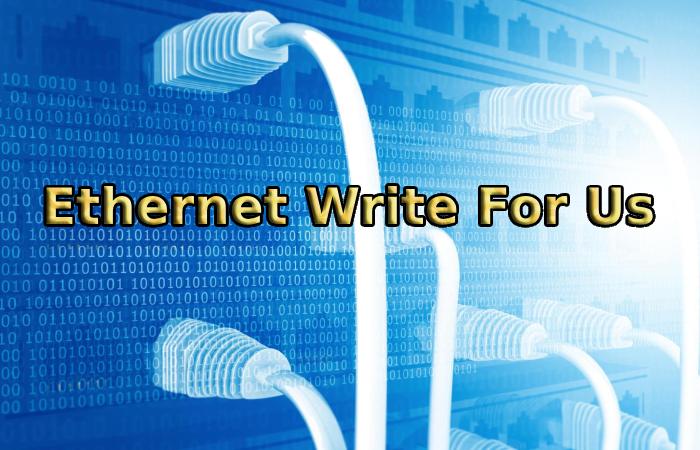
Ethernet Write For Us
Ethernet is a widely used networking technology developed in the 1970s by Xerox and later standardized by the Institute of Electrical and Electronics Engineers. It remains the dominant technology for wired local area networks (LANs) and has evolved over the years to support increasingly higher data transfer speeds. We welcome contributors searching for Ethernet to write for us, Ethernet guest posts, and submit posts to write on contact@automationes.com.
Most Common Types Of Ethernet
10BASE-T:
It was one of the earliest Ethernet standards, operating at 10 Mbps (megabits per second) over twisted-pair copper cables. It used a star topology and was widely used in the 1990s.
100BASE-TX:
It is also known as Fast Ethernet. This standard increased the data rate to 100 Mbps using twisted-pair copper cables. It retained the star topology and is often used in older networks or for connecting devices that don’t require gigabit speeds.
1000BASE-T:
Gigabit Ethernet, which operates at 1 Gbps (gigabit per second), uses twisted-pair copper cables. It is commonly used in residential and enterprise networks to provide high-speed connectivity.
10GBASE-T:
This standard supports 10 Gigabit Ethernet (10 Gbps) over twisted-pair copper cables. It provides a cost-effective way to upgrade existing Cat 6 or Cat 6a cabling infrastructure to support higher speeds.
10GBASE-SR and 10GBASE-LR:
These standards support 10 Gigabit Ethernet over fiber-optic cables. SR stands for Short Range and is used for relatively short distances within data centers, while LR stands for Long Range, and it comes under longer-distance connections, such as between buildings.
Key Aspects Of Ethernet
- Physical Medium: Ethernet can operate over various physical mediums, including twisted-pair copper cables (e.g., Cat 5e, Cat 6), fiber-optic cables, and coaxial cables. The choice of medium depends on factors such as distance requirements and bandwidth needs.
- Topologies: Ethernet networks can be organized into different topologies, including star, bus, and ring topologies. The most common today is the star topology, where each device connects to a central switch or hub.
- Protocols: Ethernet uses a set of protocols to manage data transmission and reception. The most common Ethernet protocol is Ethernet II (DIX), which frames the data for transmission. Ethernet II frames include source and destination MAC (Media Access Control) addresses.
- Data Link Layer: It functions at the Data Layer 2 of the Open Systems Interconnection. It provides a means for devices to share a common network medium, manage access to that medium, and handle error detection and correction.
- Ethernet Switches: Ethernet switches are devices commonly used in Ethernet networks to connect multiple devices in a LAN. They use MAC addresses to forward data frames to the appropriate destination devices, making them more efficient than traditional hubs.
- Full-Duplex and Half-Duplex: Ethernet supports both full-duplex and half-duplex modes. In full-duplex mode, devices can send and receive data simultaneously; in half-duplex mode, they must take turns transmitting and receiving.
How To Submit Article For Automation ES
To submit article, you can pitch us at contact@automationes.com
Why Write For Automation ES – Ethernet Write For Us

- Writing for Automation ES can give massive exposure to your site for customers looking for Ethernet.
- Automation ES existence is on social media and will share your article with the Ethernet-related audience.
- You can reach out to Ethernet enthusiasts.
Ethernet Write For Us Related Search Terms
- Computer networking
- Local area networks (LAN)
- Metropolitan area networks (man)
- Wide area networks (wan)
- IEEE 802.3. Ethernet
- Bit rates
- Backward compatibility
- Token Ring
- FDDI
- ARCNET
- Coaxial cable
- Shared medium
- Use twisted pair
- Fiber optic
- switches
- Ethernet standards
- Frames
- Retransmission
- Subnetwork Access Protocol (SNAP)
- Internet
Search Terms – Ethernet Write For Us
Ethernet Write For Us
Write For Us Ethernet
Ethernet + Write For Us
Write For Us + Ethernet
Guest Post + Ethernet
Ethernet + Guest Post
Submit an article
Contribute Ethernet
Ethernet Submit post
Ethernet writers wanted
Article Guidelines On Automation ES – Ethernet Write For Us
- We at Automation ES welcomes fresh and unique content related to Ethernet.
- Automation ES allow a minimum of 500+ words related to Ethernet.
- The editorial team of Automation ES does not encourage promotional content related to Ethernet.
- For publishing article at Automation ES Pitch us at contact@automationes.com
- Automation ES allows Posts related to Machine Learnings, Technology, Gadgets, Marketing, Start Ups, Apps, Artificial Intelligence and many more
